Irish whiskey is experiencing a renaissance – there is no doubt about it.
According to Ibec’s Irish Spirits Market Report (2022), which was released in August, Irish whiskey exports have experienced “spectacular growth”, with sales reaching 15.2 million cases in 2022. In recent years, boutique whiskey brands have burst onto the market with truly excellent products.
This is great news, but the question then becomes: how do you make your whiskey brand stand out amongst so many others?
If you’re Richard de la Poer Beresford, CEO of Curraghmore Whiskey, the answer to that question is – quite literally – all around you.
Curraghmore Estate
Curraghmore Estate is Richard’s home place and has been in the de la Poer Beresford family since they first came to Ireland (from Normandy, France) in the 1100s. This means over 850 years of the same family continuously living on the estate, which, running at over 4300ac, is the largest in the Republic of Ireland.
“As a family, we’re very passionate about Waterford and Curraghmore and are always looking to build sustainable methods of running the estate for the generations to come,” Richard tells Irish Country Living.
Farming has always been an active element of Curraghmore’s output (Richard’s father keeps cattle and sheep, currently), but over the years the estate has also diversified into horses, tourism and music (the grounds are home to the annual All Together Now festival). A few years ago, Richard formed a working partnership with the estate’s head of tillage, Ned Morrissey, and developed its latest branch of business: Curraghmore Whiskey.
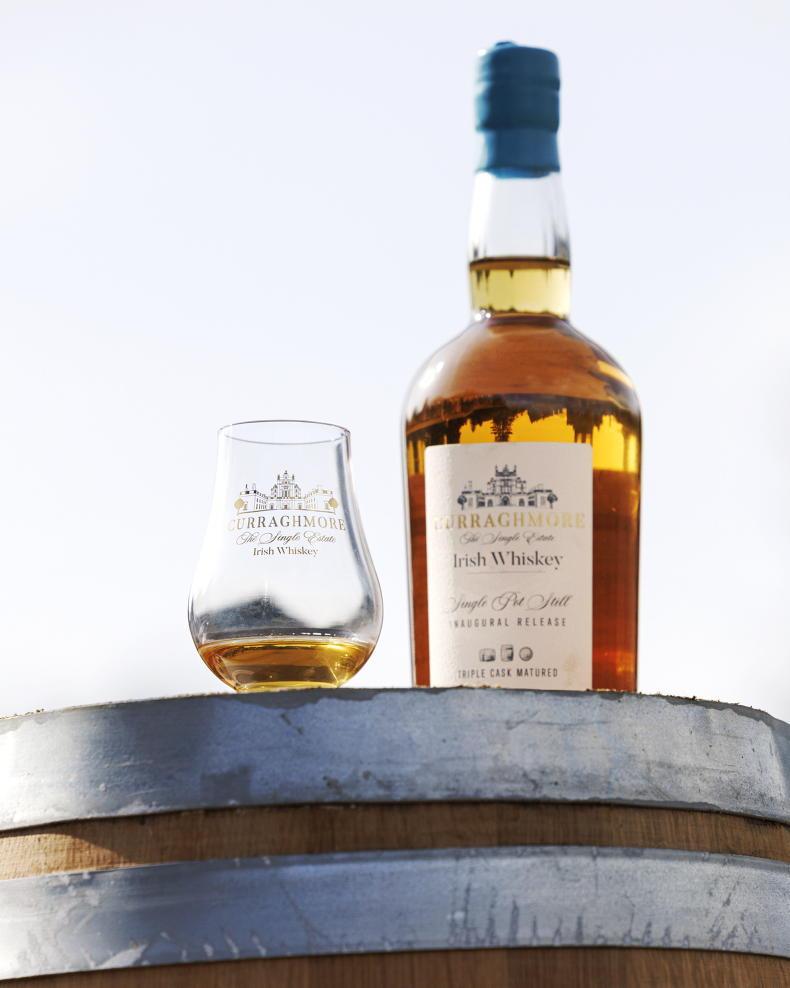
This year, the first of the Curraghmore Whiskey went on sale as part of a limited edition \ Donal O' Leary
The term ‘single estate’ refers to a food or beverage where either the main ingredient or the majority of the ingredients come from one area of land – this perfectly describes Curraghmore Whiskey.
Of the estate’s 4300ac, around 250ac are currently used for tillage. Ned has been leasing land on the estate for 26 years and runs his own tillage business (he and his family live in nearby Dunhill, Co Waterford). He grows oats, barley, wheat, maize and beets, which he sells to several different processors and clients.
“It helps to have a wide variety of crops,” he says. “It spreads your risk, but it also spreads your work load throughout the year.”
In 2016, Richard approached Ned with the idea of creating an Irish whiskey from grain grown on the estate.
“We’re always brainstorming on how we can diversify and I’ve personally always been a whiskey fan,” Richard explains. “In the beginning, we weren’t sure [about making whiskey] because there are so many parties coming to the market, but we were lucky to tap into some amazing expertise – John Teeling (Teeling Whiskey Distillery) and Patrick Shelley (Origin Spirits) - who advised us that we have something unique here and we have the opportunity to grow a single estate whiskey business. We are also very lucky to tap into Ned’s long and successful career of producing high quality tillage.”
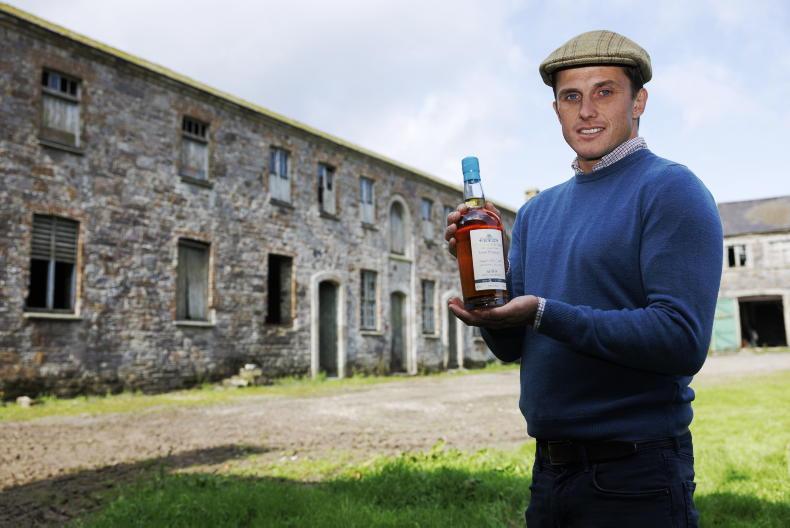
The old farmyard once housed families and held the huge amounts of grain farmed on the estate - now, new life will be breathed into the buildings as the distillery is developed \ Donal O' Leary
First year on market
They distilled their first crop in 2018 and this year – five years later – produced their first bottles of (limited release) Curraghmore Whiskey. This first batch of pot still whiskey was triple distilled before being divided and aged in three different types of cask: a European Oak Oloroso four-year-old sherry cask, a four-year-old French Virgin Oak cask and a five-year-old ex-bourbon cask. These three were then blended to create Curraghmore’s first edition.
While they plan to build an on-site distillery in the near future, the whiskey is currently being distilled at Great Northern Distillery in Co Louth. These first bottles – just 1,375 of them – retail at €195. Richard availed of master distiller and master blender Noel Sweeney’s (Next Level Distillers) expertise in the creation of this first line.
“When you come into the business you need to be able to tap into others’ expertise,” Richard says. “Noel has over 30 years’ experience blending and distilling whiskey in Ireland; he is one of three master distillers [in the country]. He reviewed our portfolio, advised us to create a triple cask whiskey and we’re very happy with it. I know that Noel is as well, he wouldn’t put his name on something he didn’t believe in.
“We also see the quintessential style of Irish whiskey being a pot still,” he adds. “No criticism on other styles, but I think that’s the one which differentiates itself the most from other global whiskeys.”
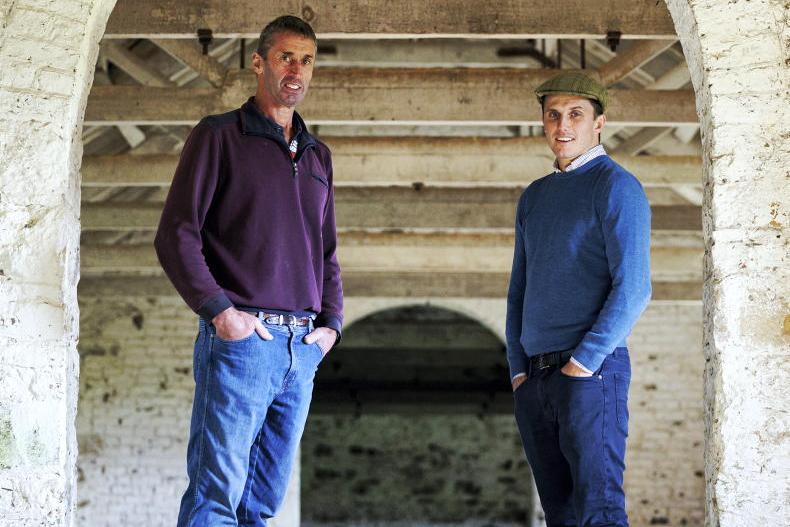
Richard de la Poer Beresford and Ned Morrissey stand in one of the estate's farmyard buildings, which will be restored into the Curraghmore Distillery \ Donal O' Leary
Flavour profile
Richard sees this first edition of Curraghmore Whiskey as a collector’s item and says it will continue to improve in body and complexity as it ages. The whiskey is well-balanced; starting off with a sweet, citrusy aroma followed by flavours of marzipan and dried fruits; finishing with pleasing spiced notes. They will be releasing more of this whiskey each year as it ages and will also separately bottle the three single casks which were blended to make this first line.
“We’re trying to encourage consumers to go on a journey of how the products are different and why,” Richard says. “It’s very interesting how each [cask] whiskey is different in its flavour profile and how they can create something new once blended.
“We’re being very clear on our labelling about which fields we harvested from in that particular year, the weather conditions, the soil pH - providing full traceability,” he adds. “It’s also a bit of an experiment to see if the whiskey varies over time through the different grains produced in the different terroirs on the estate.”
Last year, Richard received planning permission to restore Curraghmore’s 180-year-old farmyard. “The farmyard is historically significant because it was the first industrially designed agricultural complex built in Europe [by architect William Tinsley],” Richard explains. “We’re looking to restore these buildings into maturation warehouses, as well as a distillery and a visitor’s centre.”
Through this, the ultimate aim is to create a circular business where they are not just using their home-grown grain for distilling, but also their own water, oak (they are currently making barrels from one of the estate’s fallen trees), renewable energy sources and finding ways to repurpose byproducts of the whiskey-making process.
“There are certain waste products from distillation – one is spent grain; which we can feed to the animals, then there is pot ale [fermented residue], which can act as a useful fertiliser, and the other is distillery effluent,” Richard explains. “Through a local company based in Waterford, we’ve designed a way to flush the effluent through a tiered system [using three different ponds]. By the time the effluent gets to the third pond, it is at a suitable standard to be put back into the water system.”
Thinking generationally
The Curraghmore whiskey bottle is attractive, but it also speaks to the history of the estate and both Richard’s and Ned’s family connections to the land.
“It tells a bit of history about Curraghmore,” Richard says. “This whiskey business – we’re not looking to wrap it up anytime soon. We are looking for it to be a generational business that we pass on. I know Ned works in a similar way with his family. When you’re part of these amazing places, you’re simply a caretaker.”
“My parents and grandparents were steeped in tillage and grain growing; they all came from around this area,” Ned agrees, smiling. “I ended up farming back here on the estate. My own son is involved in the business now as well so it’s very much a generational effort.”
What is pot still whiskey?
Legally, to be considered an Irish pot still whiskey, the following adherences must be met:
1 The whiskey must be made from a mash of a combination of malted and unmalted barleys or other unmalted cereals.
2 It must be distilled in a pot still.
3 It must be made with a minimum of 30% malted barley and 30% unmalted barley.
Check out https://curraghmorewhiskey.com/
Read more
Southeast set for 'game changer' brewing and distilling hub
Investigating the right and the wrong variety for alcohol production
Irish whiskey is experiencing a renaissance – there is no doubt about it.
According to Ibec’s Irish Spirits Market Report (2022), which was released in August, Irish whiskey exports have experienced “spectacular growth”, with sales reaching 15.2 million cases in 2022. In recent years, boutique whiskey brands have burst onto the market with truly excellent products.
This is great news, but the question then becomes: how do you make your whiskey brand stand out amongst so many others?
If you’re Richard de la Poer Beresford, CEO of Curraghmore Whiskey, the answer to that question is – quite literally – all around you.
Curraghmore Estate
Curraghmore Estate is Richard’s home place and has been in the de la Poer Beresford family since they first came to Ireland (from Normandy, France) in the 1100s. This means over 850 years of the same family continuously living on the estate, which, running at over 4300ac, is the largest in the Republic of Ireland.
“As a family, we’re very passionate about Waterford and Curraghmore and are always looking to build sustainable methods of running the estate for the generations to come,” Richard tells Irish Country Living.
Farming has always been an active element of Curraghmore’s output (Richard’s father keeps cattle and sheep, currently), but over the years the estate has also diversified into horses, tourism and music (the grounds are home to the annual All Together Now festival). A few years ago, Richard formed a working partnership with the estate’s head of tillage, Ned Morrissey, and developed its latest branch of business: Curraghmore Whiskey.

This year, the first of the Curraghmore Whiskey went on sale as part of a limited edition \ Donal O' Leary
The term ‘single estate’ refers to a food or beverage where either the main ingredient or the majority of the ingredients come from one area of land – this perfectly describes Curraghmore Whiskey.
Of the estate’s 4300ac, around 250ac are currently used for tillage. Ned has been leasing land on the estate for 26 years and runs his own tillage business (he and his family live in nearby Dunhill, Co Waterford). He grows oats, barley, wheat, maize and beets, which he sells to several different processors and clients.
“It helps to have a wide variety of crops,” he says. “It spreads your risk, but it also spreads your work load throughout the year.”
In 2016, Richard approached Ned with the idea of creating an Irish whiskey from grain grown on the estate.
“We’re always brainstorming on how we can diversify and I’ve personally always been a whiskey fan,” Richard explains. “In the beginning, we weren’t sure [about making whiskey] because there are so many parties coming to the market, but we were lucky to tap into some amazing expertise – John Teeling (Teeling Whiskey Distillery) and Patrick Shelley (Origin Spirits) - who advised us that we have something unique here and we have the opportunity to grow a single estate whiskey business. We are also very lucky to tap into Ned’s long and successful career of producing high quality tillage.”

The old farmyard once housed families and held the huge amounts of grain farmed on the estate - now, new life will be breathed into the buildings as the distillery is developed \ Donal O' Leary
First year on market
They distilled their first crop in 2018 and this year – five years later – produced their first bottles of (limited release) Curraghmore Whiskey. This first batch of pot still whiskey was triple distilled before being divided and aged in three different types of cask: a European Oak Oloroso four-year-old sherry cask, a four-year-old French Virgin Oak cask and a five-year-old ex-bourbon cask. These three were then blended to create Curraghmore’s first edition.
While they plan to build an on-site distillery in the near future, the whiskey is currently being distilled at Great Northern Distillery in Co Louth. These first bottles – just 1,375 of them – retail at €195. Richard availed of master distiller and master blender Noel Sweeney’s (Next Level Distillers) expertise in the creation of this first line.
“When you come into the business you need to be able to tap into others’ expertise,” Richard says. “Noel has over 30 years’ experience blending and distilling whiskey in Ireland; he is one of three master distillers [in the country]. He reviewed our portfolio, advised us to create a triple cask whiskey and we’re very happy with it. I know that Noel is as well, he wouldn’t put his name on something he didn’t believe in.
“We also see the quintessential style of Irish whiskey being a pot still,” he adds. “No criticism on other styles, but I think that’s the one which differentiates itself the most from other global whiskeys.”

Richard de la Poer Beresford and Ned Morrissey stand in one of the estate's farmyard buildings, which will be restored into the Curraghmore Distillery \ Donal O' Leary
Flavour profile
Richard sees this first edition of Curraghmore Whiskey as a collector’s item and says it will continue to improve in body and complexity as it ages. The whiskey is well-balanced; starting off with a sweet, citrusy aroma followed by flavours of marzipan and dried fruits; finishing with pleasing spiced notes. They will be releasing more of this whiskey each year as it ages and will also separately bottle the three single casks which were blended to make this first line.
“We’re trying to encourage consumers to go on a journey of how the products are different and why,” Richard says. “It’s very interesting how each [cask] whiskey is different in its flavour profile and how they can create something new once blended.
“We’re being very clear on our labelling about which fields we harvested from in that particular year, the weather conditions, the soil pH - providing full traceability,” he adds. “It’s also a bit of an experiment to see if the whiskey varies over time through the different grains produced in the different terroirs on the estate.”
Last year, Richard received planning permission to restore Curraghmore’s 180-year-old farmyard. “The farmyard is historically significant because it was the first industrially designed agricultural complex built in Europe [by architect William Tinsley],” Richard explains. “We’re looking to restore these buildings into maturation warehouses, as well as a distillery and a visitor’s centre.”
Through this, the ultimate aim is to create a circular business where they are not just using their home-grown grain for distilling, but also their own water, oak (they are currently making barrels from one of the estate’s fallen trees), renewable energy sources and finding ways to repurpose byproducts of the whiskey-making process.
“There are certain waste products from distillation – one is spent grain; which we can feed to the animals, then there is pot ale [fermented residue], which can act as a useful fertiliser, and the other is distillery effluent,” Richard explains. “Through a local company based in Waterford, we’ve designed a way to flush the effluent through a tiered system [using three different ponds]. By the time the effluent gets to the third pond, it is at a suitable standard to be put back into the water system.”
Thinking generationally
The Curraghmore whiskey bottle is attractive, but it also speaks to the history of the estate and both Richard’s and Ned’s family connections to the land.
“It tells a bit of history about Curraghmore,” Richard says. “This whiskey business – we’re not looking to wrap it up anytime soon. We are looking for it to be a generational business that we pass on. I know Ned works in a similar way with his family. When you’re part of these amazing places, you’re simply a caretaker.”
“My parents and grandparents were steeped in tillage and grain growing; they all came from around this area,” Ned agrees, smiling. “I ended up farming back here on the estate. My own son is involved in the business now as well so it’s very much a generational effort.”
What is pot still whiskey?
Legally, to be considered an Irish pot still whiskey, the following adherences must be met:
1 The whiskey must be made from a mash of a combination of malted and unmalted barleys or other unmalted cereals.
2 It must be distilled in a pot still.
3 It must be made with a minimum of 30% malted barley and 30% unmalted barley.
Check out https://curraghmorewhiskey.com/
Read more
Southeast set for 'game changer' brewing and distilling hub
Investigating the right and the wrong variety for alcohol production








![George Lamb: ‘we have to find the sweet spot [in agriculture]’](https://s3-eu-west-1.amazonaws.com/ifj/WEBFILES/000/867/584/2372033-867584.jpg)

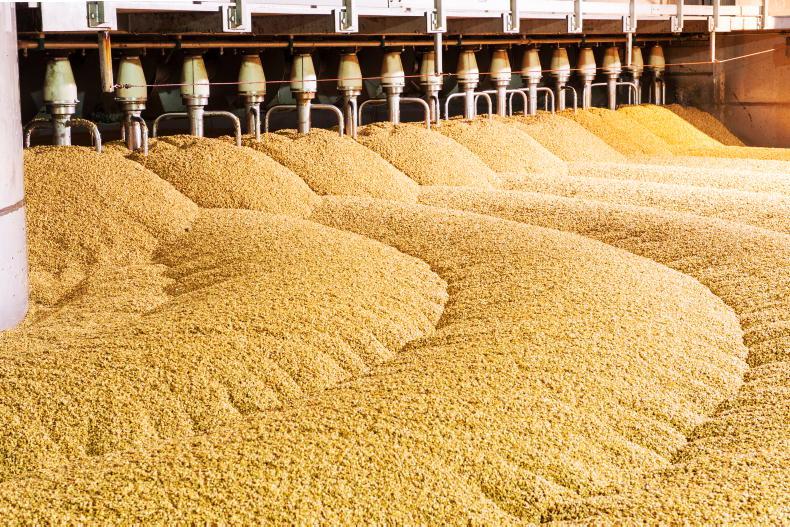
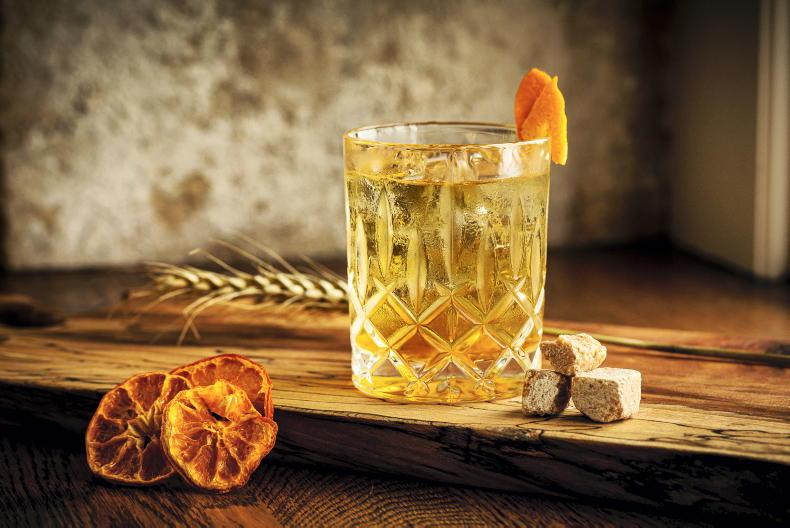
SHARING OPTIONS